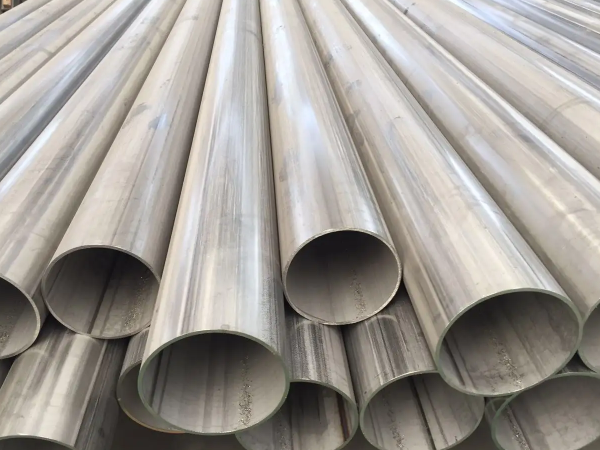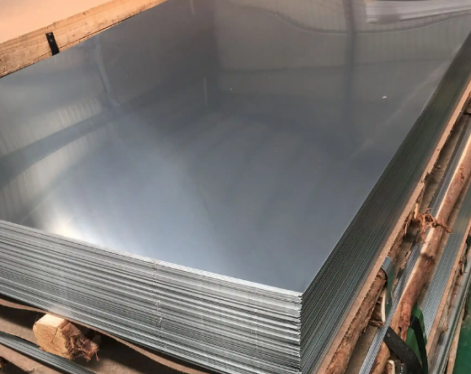Stainless steel welded pipe is a relatively common material in production, and it is also of great help to life. Nitrogen is often used in stainless steel welded pipe welding. Many people are wondering why nitrogen is used?
Reasons to use nitrogen when welding:
The role of nitrogen in stainless steel welded pipes is mainly reflected in the structure, mechanical properties and corrosion resistance of stainless steel. Nitrogen is a very strong element that forms and stabilizes austenite and expands the austenite phase. It can replace part of the nickel in stainless steel, reduce the ferrite content and make the austenite more stable. Precipitation of harmful intermetallic phases and martensitic transformation are prevented even under cold conditions.
The effect of nitrogen on the mechanical properties of stainless steel: nitrogen significantly increases the strength of steel pipes without reducing ductility and toughness of stainless steel materials; nitrogen can also improve the creep resistance, fatigue resistance, wear resistance and yield strength of stainless steel. As an element to improve corrosion resistance, it can also form nitrogen gas in NH 4 + in pores, eliminate H + generation, inhibit pH value, thereby inhibit the occurrence of pitting corrosion and dissolution rate in metal pores, and prevent local corrosion.

Inspection of stainless steel welded pipe:
Regularly check the connection parts of the aluminum alloy frame, tighten the bolts in time, and replace the damaged parts. The vulnerable parts of stainless steel welded pipes such as positioning shaft pins, wind braces, floor springs, etc., should be checked frequently, and lubricating oil should be added regularly to keep them clean and sensitive. Check the joints of the frame frequently, and tighten the loose screws.
Surface cleaning of stainless steel welded pipes:
1) Pickling, that is, the stainless steel welded pipe after finishing rolling is immersed in the sulfuric acid pool.
2) Use organic solvent to remove oil stain on the surface of sanitary stainless steel welded pipe
To remove oil stains on the surface of stainless steel welded pipes, organic solvents, lye and surfactant emulsions can be used to clean, and methods such as scrubbing, dipping, and spraying can be used. For example, for the cleaning of stainless steel pipes before welding, it is necessary to wipe off impurities on both sides of the welding groove and the nearby surface 25-50 mm with a clean cloth, then scrub with an organic solvent, and then use a clean dry cloth to remove the solvent.
Tips: the seamless pipe is different from the welded steel tube. The seamless pipe sizes: the maximum diameter of the seamless pipe can reach 900mm, and the minimum diameter is 4mm.
Reasons to use nitrogen when welding:
The role of nitrogen in stainless steel welded pipes is mainly reflected in the structure, mechanical properties and corrosion resistance of stainless steel. Nitrogen is a very strong element that forms and stabilizes austenite and expands the austenite phase. It can replace part of the nickel in stainless steel, reduce the ferrite content and make the austenite more stable. Precipitation of harmful intermetallic phases and martensitic transformation are prevented even under cold conditions.
The effect of nitrogen on the mechanical properties of stainless steel: nitrogen significantly increases the strength of steel pipes without reducing ductility and toughness of stainless steel materials; nitrogen can also improve the creep resistance, fatigue resistance, wear resistance and yield strength of stainless steel. As an element to improve corrosion resistance, it can also form nitrogen gas in NH 4 + in pores, eliminate H + generation, inhibit pH value, thereby inhibit the occurrence of pitting corrosion and dissolution rate in metal pores, and prevent local corrosion.

Inspection of stainless steel welded pipe:
Regularly check the connection parts of the aluminum alloy frame, tighten the bolts in time, and replace the damaged parts. The vulnerable parts of stainless steel welded pipes such as positioning shaft pins, wind braces, floor springs, etc., should be checked frequently, and lubricating oil should be added regularly to keep them clean and sensitive. Check the joints of the frame frequently, and tighten the loose screws.
Surface cleaning of stainless steel welded pipes:
1) Pickling, that is, the stainless steel welded pipe after finishing rolling is immersed in the sulfuric acid pool.
2) Use organic solvent to remove oil stain on the surface of sanitary stainless steel welded pipe
To remove oil stains on the surface of stainless steel welded pipes, organic solvents, lye and surfactant emulsions can be used to clean, and methods such as scrubbing, dipping, and spraying can be used. For example, for the cleaning of stainless steel pipes before welding, it is necessary to wipe off impurities on both sides of the welding groove and the nearby surface 25-50 mm with a clean cloth, then scrub with an organic solvent, and then use a clean dry cloth to remove the solvent.
Tips: the seamless pipe is different from the welded steel tube. The seamless pipe sizes: the maximum diameter of the seamless pipe can reach 900mm, and the minimum diameter is 4mm.









